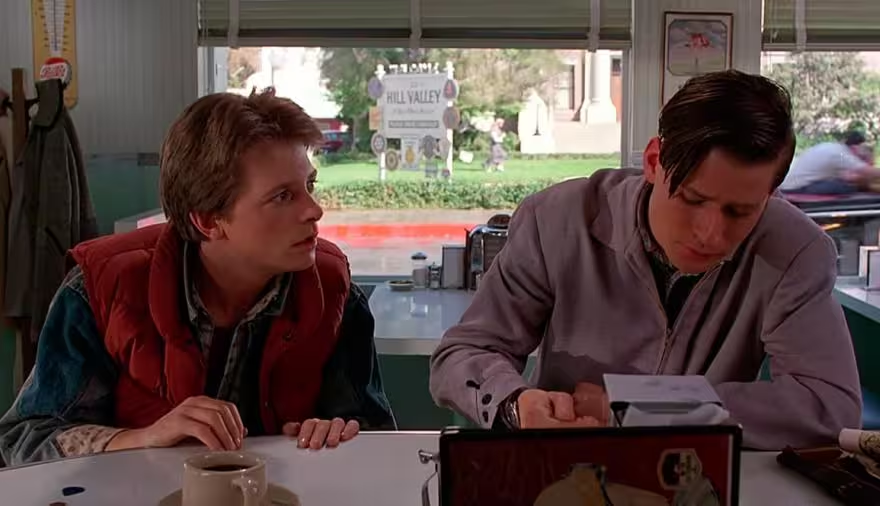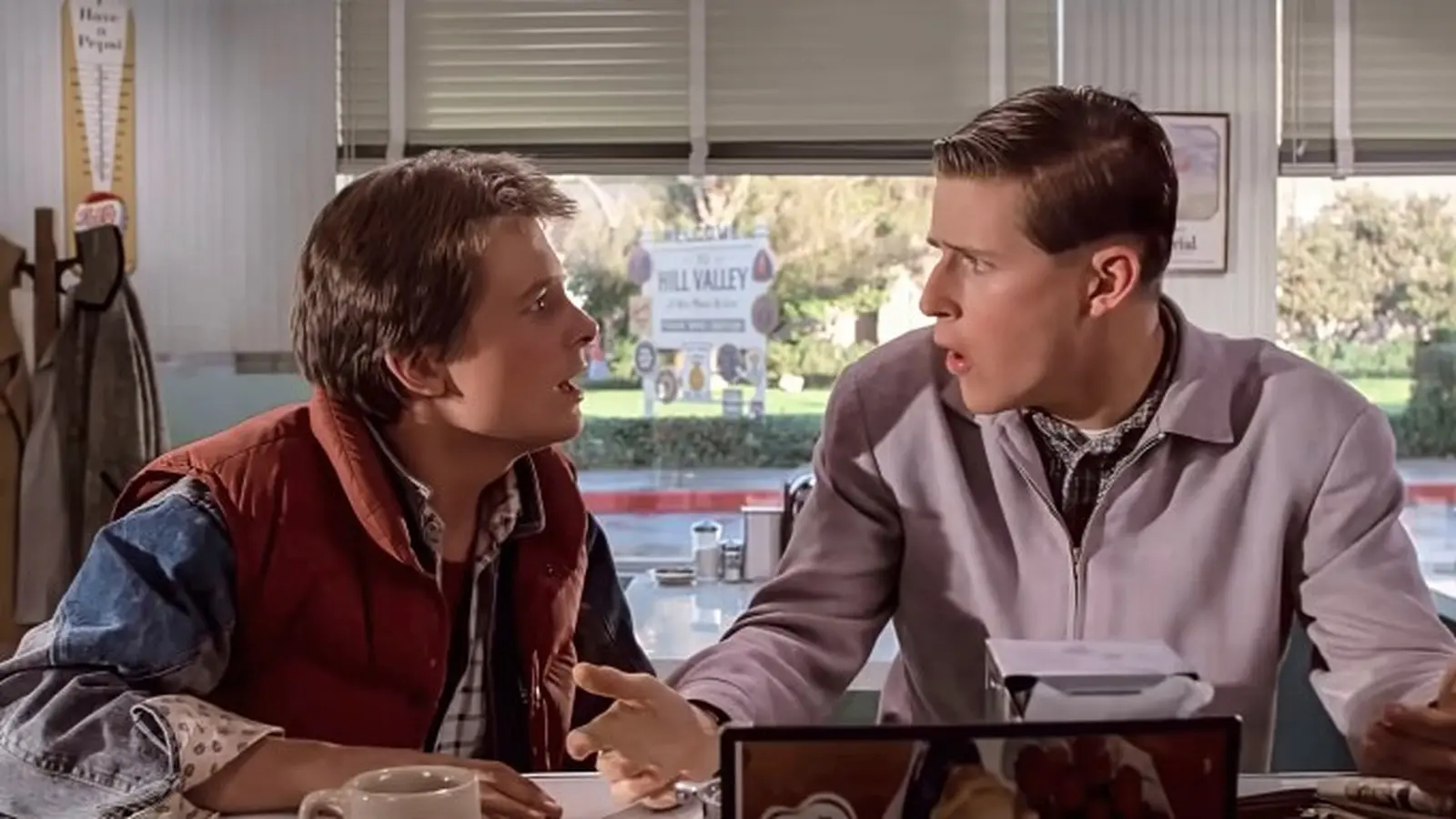5 Minutes
As Back to the Future celebrates its 40th anniversary, Michael J. Fox has returned to the story behind one of the film’s most memorable — and quietly combustible — working relationships. In his new memoir, Future Boy, Fox revisits the 1985 time-travel classic and shares a vivid anecdote about co-star Crispin Glover’s unconventional approach to playing George McFly.
Fox’s recollection captures how Glover’s unpredictable performance style occasionally collided with the practical demands of a busy film set. During a scene where George was supposed to walk down a narrow lane between a clothesline and Marty (Fox), Glover refused to stay “in the lane.” According to Fox, Glover pictured George as a peripatetic, free-spirited wanderer who would not be hemmed in by marks — so he moved perpendicular to the camera, destabilizing the blocking.
The crew’s solution was almost cinematic in itself: they literally built a miniature corral of sandbags and C-stands to keep Glover within the frame. It’s a small, physical example of how directors and grips sometimes must improvise to preserve a shot when an actor’s instincts don’t align with the storyboard.

Talent, tension, and the trade-offs of creativity
Fox is clear-eyed about the trade-offs. He writes that he loved working with Glover and admired his talent, even as Glover’s methods "created friction." That friction, Fox argues, was rooted in artistic commitment rather than malice; Glover stayed true to his interpretation of George. Fox contrasts this with the other great wildcard on set, Christopher Lloyd, whose own improvisational tendencies were familiar to Fox and often welcomed as part of the film’s magic.
That tension had consequences: Crispin Glover did not return for the sequels Back to the Future Part II (1989) and Part III (1990), and the character of George McFly was recast. The absence of the original George has remained a topic of fan debate and industry discussion about actor rights, likeness, and creative control in long-running franchises.
Why the story still matters
Beyond a charming set anecdote, this episode speaks to a larger pattern in filmmaking. Blockbuster productions must balance the director’s map, the camera’s eye, and an actor’s instincts. Back to the Future is emblematic of the 1980s cinema ecosystem: a commercial studio movie that still relied on eccentric character actors to give its supporting world texture and unpredictability.

Comparatively, Robert Zemeckis’ later films — from Who Framed Roger Rabbit to Forrest Gump — continued to profile that tension between technical precision and lived-in performance. Zemeckis often blended careful visual planning with actors who brought volatile energy, a coupling that can produce scenes both technically impressive and emotionally alive.
Fans have long celebrated Glover’s quirky George as an indelible part of the first film’s charm. Trivia buffs will note that the crew’s sandbag “corral” is one of those on-set stories that circulates among movie lovers: a practical craft workaround turned folklore, showing how physical problem-solving can preserve performance integrity.
"Creative tension is often the engine of memorable cinema," says film historian Elena Moretti. "When an actor challenges the frame, the production either adapts or loses something. In the case of Back to the Future, the adaptation produced unforgettable moments, even if it required a few sandbags and a lot of patience."
From a critical perspective, these behind-the-scenes frictions are not just gossip — they expose the collaborative architecture of filmmaking. The interplay between actor, director, and crew is rarely smooth, but that dynamic friction can sharpen performances and contribute to the film’s long-term appeal.
Whether you’re a hardcore fan revisiting the trilogy or someone discovering the film for the first time, Fox’s memoir offers a warm, humanizing look at how films are really made: a mix of planning, improvisation, and the occasional physical corral.
In short, the story of Glover, Fox, and those sandbags is a reminder that Hollywood’s most enduring hits often emerge from small, imperfect, and very human compromises.
Source: deadline



Leave a Comment